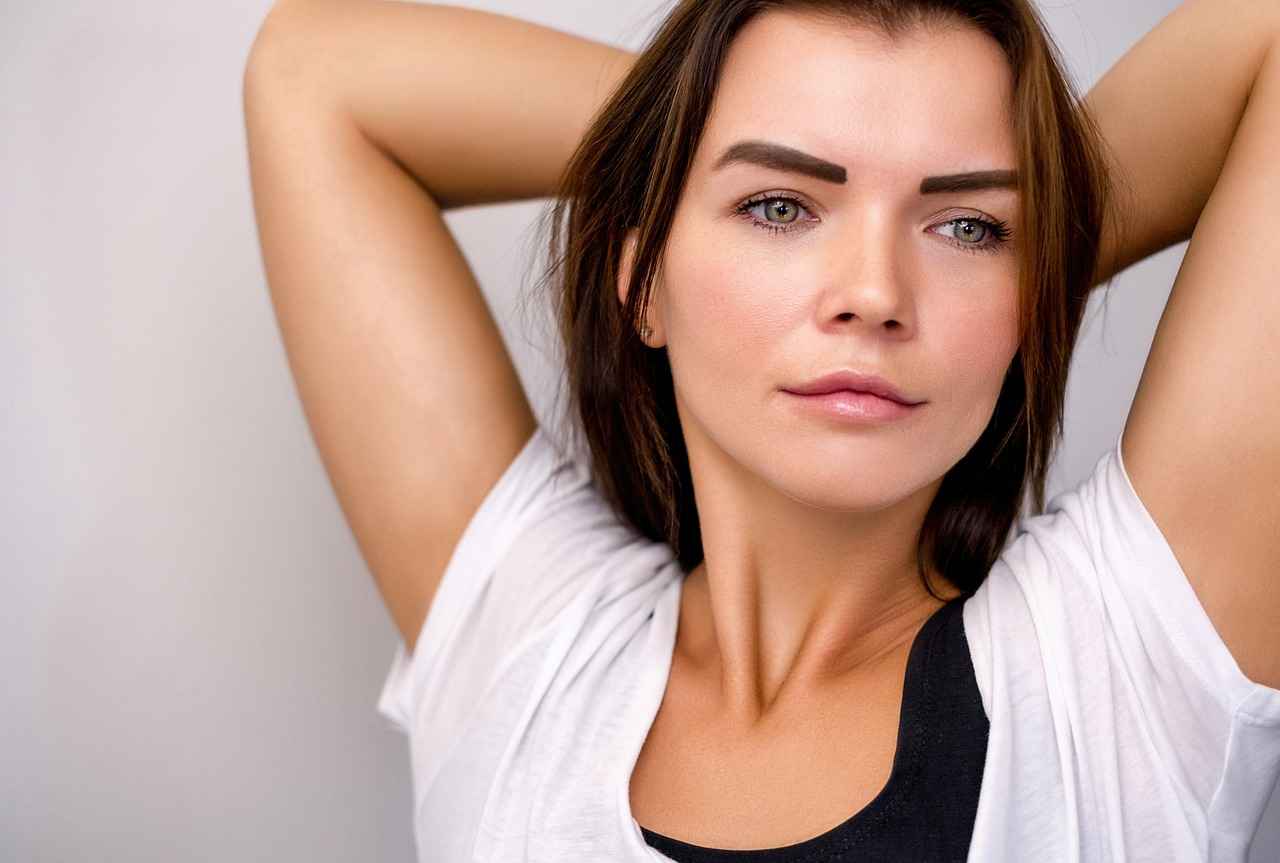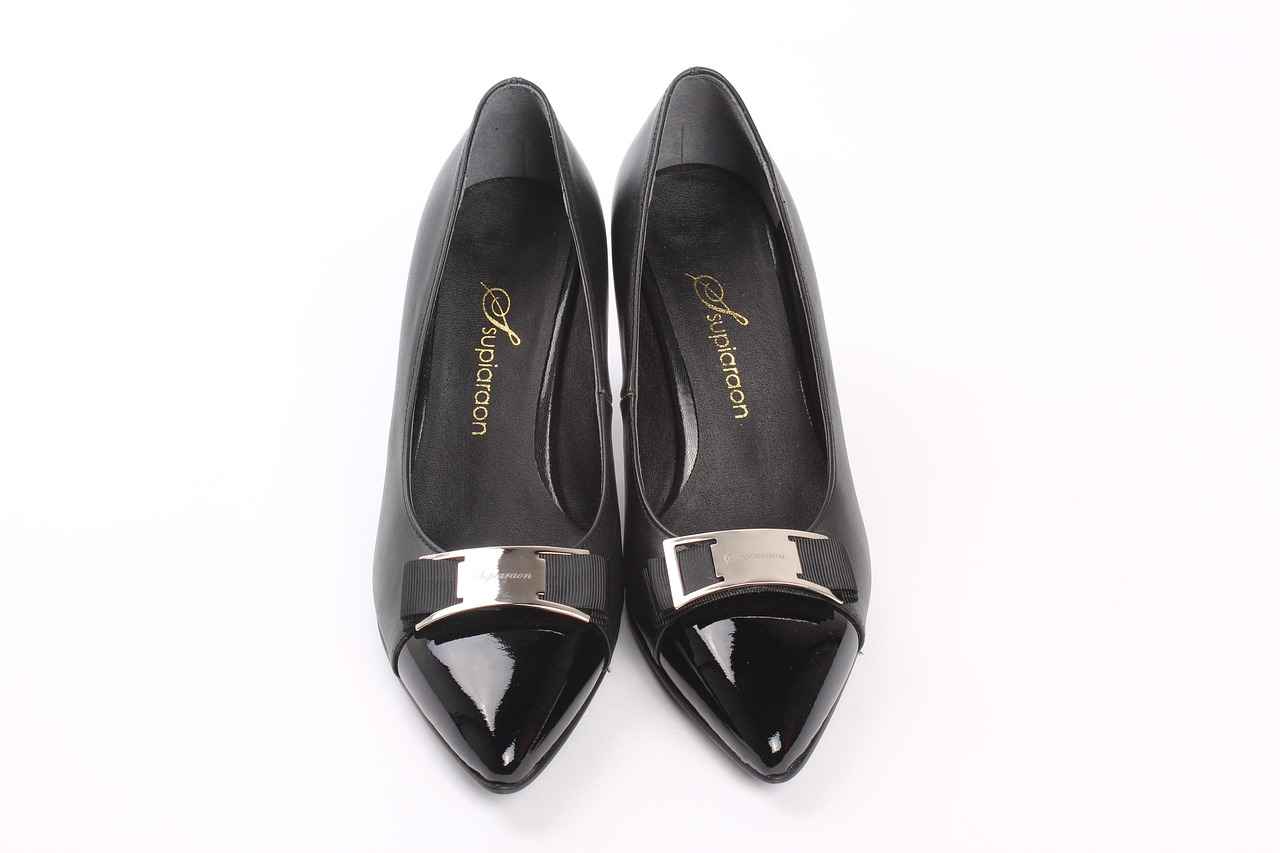This article provides effective methods and tips for removing makeup stains from slip dresses, ensuring your favorite garments remain pristine and stylish for any occasion. Slip dresses are a timeless wardrobe staple, but they can be susceptible to makeup stains. Understanding how to effectively treat these stains can save you from the heartbreak of a ruined outfit.
Makeup stains on slip dresses typically arise from foundation, lipstick, and other cosmetic products. These products contain oils, pigments, and waxes that can easily transfer onto fabric. Knowing the origins of these stains helps in selecting the right removal technique, ensuring that the fabric remains unharmed.
Acting quickly on makeup stains is crucial. The longer a stain sits, the more it sets into the fabric, making it increasingly difficult to remove. Immediate treatment can significantly increase the chances of complete removal, thus preserving the quality and appearance of your slip dress.
Selecting the right products tailored for different types of makeup stains can make a significant difference in the effectiveness of the removal process. Here are some recommended options:
- Detergents: Choose a gentle detergent that is effective against oil-based stains.
- Stain Removers: Look for products specifically designed for makeup stains.
- Homemade Remedies: Common household items like dish soap and baking soda can also work wonders.
Before starting the stain removal process, proper preparation of your slip dress is essential. This includes:
- Testing for Colorfastness: Always test a small, inconspicuous area with your cleaning solution to ensure it won’t discolor the fabric.
- Removing Excess Makeup: Gently blot away any excess makeup with a clean cloth to prevent spreading.
Different types of makeup require specific techniques for effective removal:
- Removing Foundation Stains: Use a mixture of dish soap and water, applying it with a soft cloth.
- Dealing with Lipstick Stains: An oil-based makeup remover can effectively break down the oils in lipstick.
Knowing whether your slip dress can withstand machine washing post-treatment is essential to maintain its quality. Always check the care label before proceeding.
- Choosing the Right Washing Cycle: Use a delicate cycle to protect the fabric.
- Drying Techniques for Slip Dresses: Air drying is recommended to prevent shrinkage and maintain the shape of your dress.
In some cases, professional cleaning may be necessary for particularly stubborn stains or delicate fabrics. Recognizing which stains require expert help can save time and prevent damage.
- Identifying Stains That Require Professional Help: If a stain persists after multiple attempts at home, it may be time to consult a professional.
- Choosing the Right Dry Cleaner: Look for a reputable cleaner experienced in handling delicate fabrics to ensure your slip dress is treated appropriately.
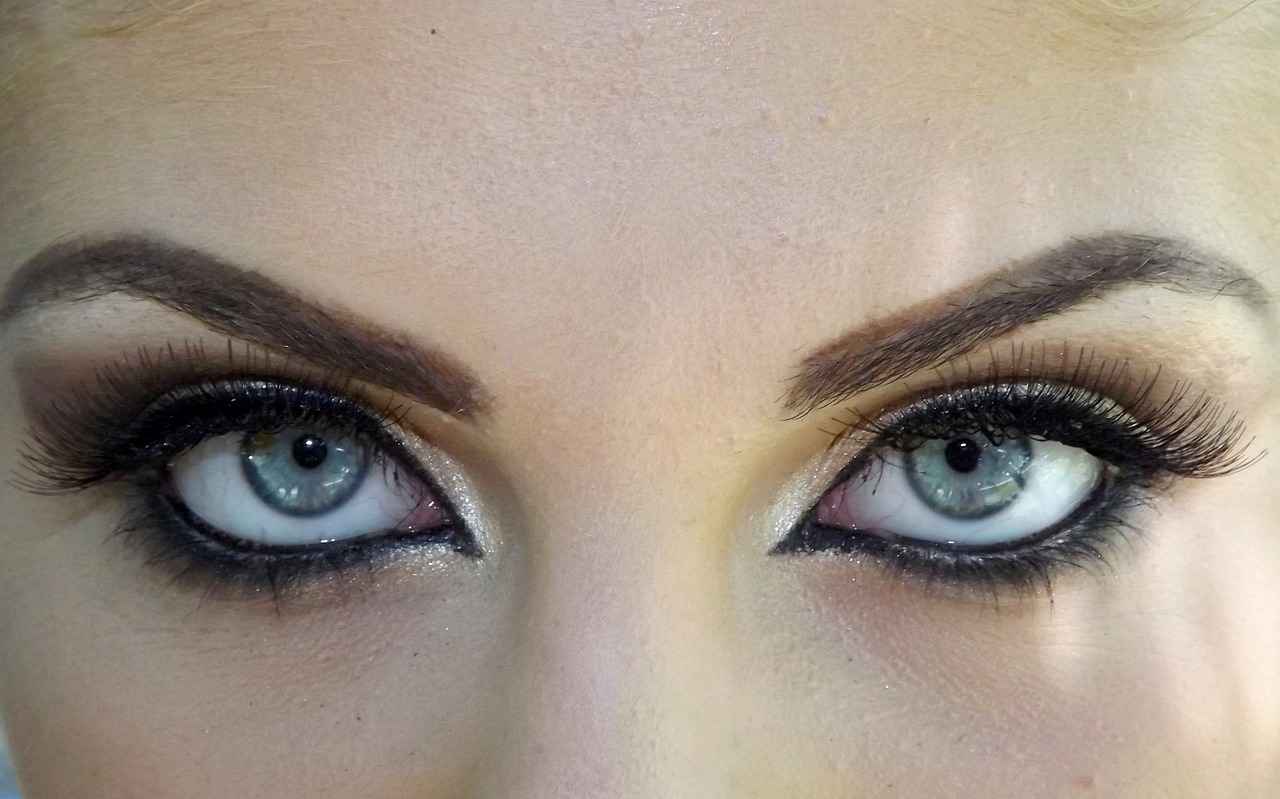
What Causes Makeup Stains on Slip Dresses?
Makeup stains can be a common yet frustrating issue for those who love to wear slip dresses. Understanding the origins of these stains is crucial for effective removal and preservation of your favorite garments. Makeup products are formulated with a variety of ingredients, including oils, pigments, and waxes, which can lead to stubborn stains on delicate fabrics. By recognizing the specific components of makeup that cause stains, you can choose the right removal techniques that will not damage the fabric.
Makeup stains are primarily caused by the interaction of various cosmetic products with the fabric of your slip dress. Here are some common culprits:
- Foundation: This is often oil-based and can seep into the fibers of the fabric, creating a persistent stain.
- Concealer: Similar to foundation, concealer contains oils and pigments that can be difficult to remove if not treated promptly.
- Lipstick: Many lipsticks are formulated with waxes and oils, which can transfer easily onto clothing, especially if you accidentally brush against your dress.
- Blush and Eyeshadow: These products often contain pigments that can leave noticeable marks, particularly if they are powder-based.
Each type of makeup has its own unique composition, which means that the removal technique may vary. For instance, oil-based products require different treatment methods than water-based products. Understanding these differences is essential for choosing the right cleaning approach.
Acting quickly on makeup stains is vital for successful removal. The longer a stain sits, the more it sets into the fabric, making it increasingly difficult to remove. Immediate treatment not only increases the chances of complete stain removal but also helps maintain the quality and appearance of your slip dress.
Choosing the right products is crucial for effective stain removal. Here are some recommended options:
- Stain Removers: Look for products specifically designed to tackle makeup stains. These often contain enzymes that break down the oils and pigments.
- Detergents: Use a gentle detergent that is suitable for delicate fabrics. Avoid harsh chemicals that could damage your slip dress.
- Homemade Remedies: Common household items like dish soap, vinegar, or baking soda can be effective in treating stains.
In conclusion, understanding the origins of makeup stains on slip dresses is essential for effective treatment. By recognizing the specific makeup components and acting swiftly, you can preserve the beauty and integrity of your garments. Selecting the right stain removal products tailored to the type of makeup involved will further enhance your chances of success.

Why Is Immediate Stain Treatment Important?
When it comes to maintaining the beauty and elegance of your slip dress, acting swiftly on makeup stains is crucial. The sooner you address a stain, the higher the chances you have of achieving complete removal. This is especially important for slip dresses, which are often made from delicate fabrics that can be easily damaged if the stain is left untreated.
Makeup products, such as foundation, lipstick, and mascara, can leave behind unsightly marks that not only detract from the dress’s appearance but can also become more challenging to remove over time. As the makeup sets into the fabric, it can bond more tightly, making it increasingly difficult to eliminate the stain completely. Therefore, a prompt response is key to preserving the quality and appearance of your garment.
Additionally, different types of makeup contain various ingredients that react differently with fabrics. For instance, oil-based products like lipstick may require specific techniques to lift the stain effectively, while water-based foundations might respond better to different cleaning agents. Understanding the nature of the stain and acting quickly can significantly affect the outcome of your stain removal efforts.
Moreover, immediate treatment can prevent the stain from spreading. If left unattended, makeup can transfer to other areas of the fabric or even onto other garments, leading to a larger mess that requires more extensive cleaning. By addressing the stain right away, you can minimize the risk of further damage and maintain the integrity of your slip dress.
It’s also worth noting that the longer a stain sits, the more it can alter the fabric’s texture and color. This can lead to permanent discoloration or even degradation of the material, which is particularly concerning for high-quality fabrics often used in slip dresses. Therefore, taking quick action not only enhances the likelihood of successful stain removal but also helps maintain the dress’s longevity.
In conclusion, the importance of immediate stain treatment cannot be overstated. Whether you are preparing for a special occasion or simply want to keep your favorite slip dress looking its best, acting quickly on makeup stains is essential. By doing so, you ensure that your garment remains in pristine condition, allowing you to wear it with confidence and style.
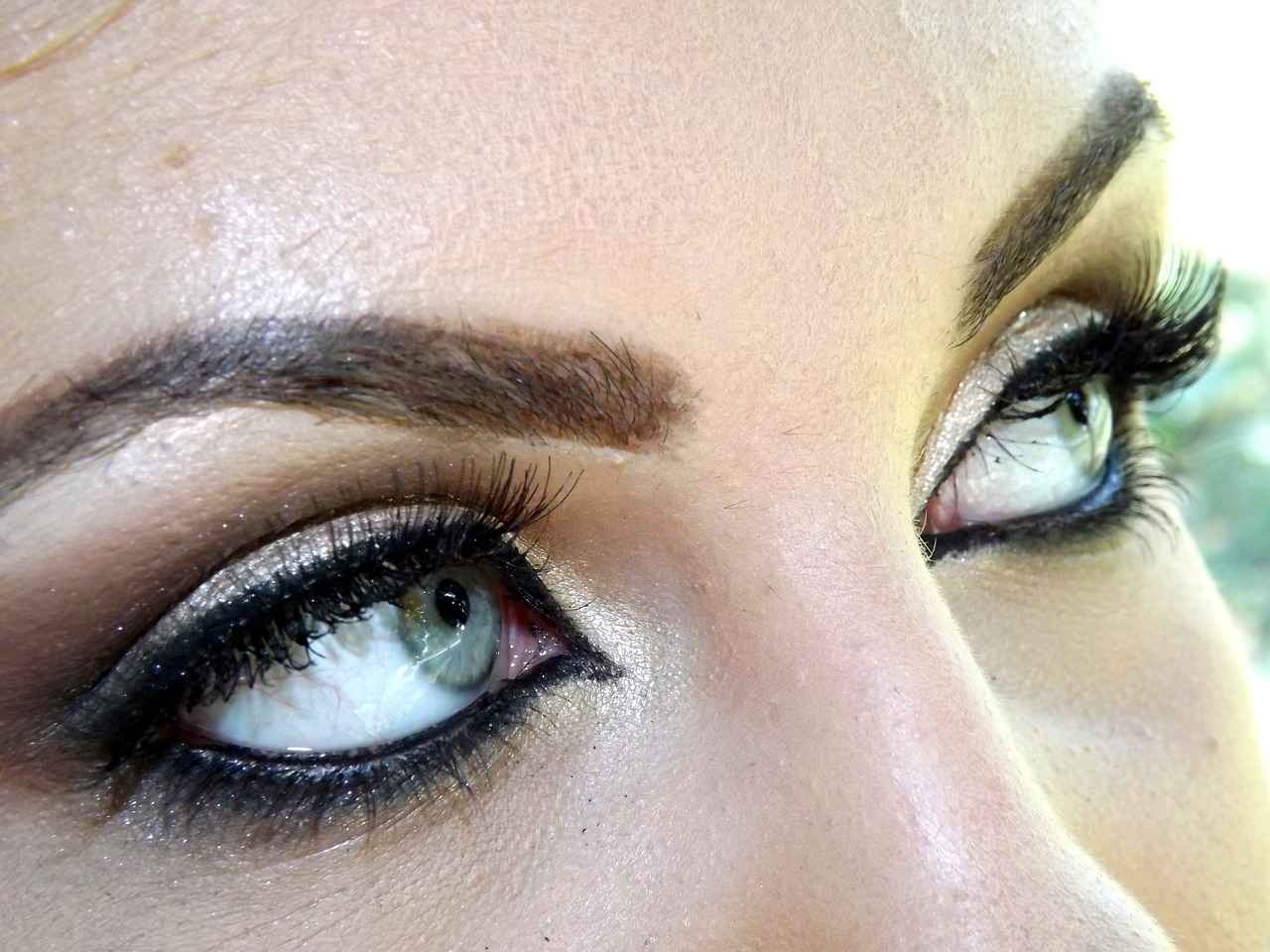
What Are the Best Stain Removal Products?
When it comes to maintaining the elegance of your slip dress, understanding what products work best for removing makeup stains is crucial. Makeup stains can be tricky, and using the right products tailored to specific types of stains can significantly enhance the effectiveness of the removal process. Here, we explore various stain removal products to help you keep your favorite garments looking pristine.
Makeup products vary widely in their composition; therefore, the stain removal products you choose should be designed to target those specific ingredients. For instance, oil-based makeup like foundations and lipsticks require different approaches compared to water-based products. Using the wrong type of product can lead to fabric damage or ineffective stain removal.
Specialized detergents and stain removers are formulated to tackle specific makeup components. Look for products that contain enzymes or are labeled as effective against oil-based stains. Here are some recommended types:
- Enzyme-based stain removers: These are excellent for breaking down protein-based stains like foundation.
- Oily stain removers: Products designed to dissolve oils are ideal for lipstick and mascara stains.
- Color-safe bleach: This can help with stubborn stains on white or light-colored fabrics without causing discoloration.
If you prefer a more natural approach, many household items can effectively treat makeup stains. Here are some popular homemade solutions:
- Dish soap and water: Mix a few drops of dish soap with water to create a gentle cleaning solution for removing oily stains.
- White vinegar: This can help lift stains and neutralize odors. Mix it with water and apply to the stain.
- Baking soda paste: Create a paste with baking soda and water, apply it to the stain, and let it sit before rinsing.
Different makeup types require specific treatments for effective removal:
- Foundation: Blot excess foundation with a tissue before applying a stain remover. Use a cloth dampened with a gentle detergent to lift the stain.
- Lipstick: For oily lipstick stains, apply a small amount of rubbing alcohol to a cotton ball and gently dab at the stain.
- Eye makeup: Waterproof mascara can be particularly stubborn. Use an oil-based makeup remover to effectively break it down.
Before applying any stain removal product, it’s essential to test it on a hidden area of the fabric to check for colorfastness. This step ensures that the product will not damage or discolor your slip dress.
In summary, selecting the right stain removal products is vital for maintaining the beauty of your slip dress. By understanding the various types of makeup stains and the appropriate products to use, you can effectively remove stains while preserving the integrity of the fabric. Whether you opt for specialized detergents or homemade remedies, acting swiftly and using the right techniques will keep your garments looking their best.
Detergents and Stain Removers
When it comes to maintaining the beauty of your slip dress, understanding how to effectively remove makeup stains is crucial. One of the most effective methods involves using specialized detergents and stain removers. These products are designed to target specific ingredients commonly found in makeup, significantly enhancing the likelihood of successful stain removal while ensuring that the fabric remains unharmed.
Specialized detergents contain unique formulations that can tackle various types of makeup, including foundations, powders, and lipsticks. They work by breaking down the chemical bonds in these products, allowing them to lift away from the fabric more easily. By using a detergent specifically designed for makeup stains, you can:
- Enhance stain removal efficiency: Targeted formulas can penetrate the stain more effectively than regular detergents.
- Protect delicate fabrics: Many specialized products are formulated to be gentle on fabrics, reducing the risk of damage.
- Maintain color integrity: These detergents often include color-safe components that prevent fading.
In addition to detergents, using a dedicated stain remover can further improve your chances of removing makeup stains. Stain removers are typically more concentrated and designed to address specific types of stains. For instance:
- Oil-based stain removers: Ideal for greasy makeup like foundations and lipsticks.
- Water-based stain removers: Effective for lighter makeup products, such as powders and blushes.
To maximize the effectiveness of these products, follow these steps:
- Pre-treat the stain: Apply the stain remover directly to the affected area and let it sit for a few minutes.
- Gently blot the stain: Use a clean cloth or sponge to dab the area, working from the outside in to avoid spreading the stain.
- Wash as directed: Follow the instructions on the detergent or stain remover for the best washing method.
For particularly stubborn stains, consider combining a specialized detergent with a stain remover for a more powerful effect. This dual approach can significantly improve the chances of complete stain removal while keeping your slip dress looking its best.
By utilizing specialized detergents and stain removers, you can effectively tackle makeup stains on your slip dress. These products not only enhance the likelihood of successful stain removal but also protect the integrity of the fabric. Always remember to follow the application instructions for the best results and keep your favorite garments looking pristine.
Homemade Remedies for Makeup Stains
can be a game-changer for those looking to maintain their favorite slip dresses without resorting to harsh chemicals. Many household items can effectively treat makeup stains, providing a cost-effective and eco-friendly alternative to commercial products. Below are some of the most effective homemade remedies you can use to tackle various makeup stains.
Homemade remedies are often made from natural ingredients that are readily available in your kitchen. They can be gentle on fabrics while being tough on stains. Plus, they help you avoid the potentially harmful chemicals found in many commercial stain removers.
- Baking Soda: This versatile ingredient can be used to create a paste with water that effectively lifts stains. Apply the paste to the stained area, let it sit for 15-30 minutes, then rinse.
- White Vinegar: Known for its acidic properties, vinegar can break down makeup oils. Mix equal parts vinegar and water, apply to the stain, and blot with a clean cloth.
- Dish Soap: A few drops of dish soap mixed with water can create a powerful cleaning solution. Gently rub the mixture into the stain, then rinse thoroughly.
- Olive Oil: For stubborn lipstick stains, olive oil can be effective in breaking down the oils. Dab a small amount onto the stain, let it sit for a few minutes, then wash as usual.
- Hydrogen Peroxide: This can be used for white or colorfast fabrics. Apply a small amount directly on the stain, let it bubble for a few minutes, then rinse.
To ensure the best results when using homemade remedies, follow these steps:
- Act Quickly: The sooner you treat the stain, the better your chances of complete removal.
- Test for Colorfastness: Before applying any remedy, test it on a hidden area of the fabric to ensure it won’t cause discoloration.
- Apply the Remedy: Use a clean cloth or sponge to apply the chosen remedy directly to the stain.
- Blot, Don’t Rub: Gently blot the area to lift the stain without damaging the fabric.
- Rinse Thoroughly: After treatment, rinse the area with cold water to remove any residue.
- Wash as Usual: Follow up with your regular washing routine to ensure all remnants of the stain and the remedy are gone.
For the best results, consider the following tips:
- Always use cold water for rinsing, as hot water can set the stain.
- Use a soft cloth to avoid damaging delicate fabrics.
- Be patient; some stains may require multiple treatments.
Using homemade remedies for makeup stains not only saves you money but also promotes a healthier approach to garment care. With a little effort and the right ingredients, you can keep your slip dresses looking fresh and beautiful.

How to Prepare Your Slip Dress for Stain Removal?
When it comes to maintaining the beauty of your slip dress, proper preparation before stain removal is absolutely essential. This step not only prevents further damage but also ensures that the stain removal process is both effective and safe for the fabric. Here’s how to prepare your slip dress for the best results.
Proper preparation can significantly enhance the effectiveness of your stain removal efforts. By taking a few simple steps, you can avoid causing additional harm to your delicate fabric. This is particularly important for slip dresses, which are often made from sensitive materials like silk or satin. Here are some key reasons why preparation matters:
- Prevents Fabric Damage: Incorrect handling can lead to tears, discoloration, or other forms of damage.
- Enhances Stain Removal: A well-prepared garment allows for more effective penetration of stain removal products.
- Reduces the Risk of Spreading: Properly addressing the stain can prevent it from spreading to other areas of the dress.
Follow these steps to ensure your slip dress is ready for effective stain treatment:
- Assess the Stain: Identify the type of makeup stain you are dealing with. Different stains require different removal techniques.
- Check the Care Label: Always refer to the care label on your slip dress for specific washing instructions and warnings.
- Test for Colorfastness: Before applying any cleaning solution, conduct a patch test on an inconspicuous area to ensure the fabric won’t discolor.
- Remove Excess Makeup: Gently scrape off any excess makeup with a blunt knife or a soft cloth. Be careful not to rub, as this can push the stain deeper into the fibers.
Having the right tools and products on hand can make a significant difference in the stain removal process. Here are some essentials:
- Stain Remover: Choose a stain remover specifically designed for delicate fabrics.
- Soft Cloths: Use clean, soft cloths to dab at the stain without causing damage.
- Blunt Knife or Spoon: For gently scraping off excess makeup.
- Cold Water: Rinse the stained area with cold water to help lift the stain.
To achieve the best results, it’s essential to avoid common pitfalls during the preparation process:
- Using Hot Water: Hot water can set stains, especially from makeup. Always use cold water.
- Scrubbing the Stain: Rubbing can damage the fabric and spread the stain. Always dab gently.
- Ignoring the Care Label: Not following the care instructions can lead to irreversible damage.
In conclusion, preparing your slip dress for stain removal is a critical step that should not be overlooked. By following these guidelines, you can effectively treat makeup stains while preserving the integrity of your garment. Remember that a little care goes a long way in maintaining the beauty and longevity of your slip dress.
Testing for Colorfastness
When it comes to caring for your beloved slip dress, is an essential step that should never be overlooked. This process helps to ensure that your dress retains its original color and vibrancy after cleaning. Before applying any cleaning solution, it’s crucial to conduct a colorfastness test to avoid potential discoloration or damage to the fabric.
Colorfastness refers to the resistance of a fabric’s color to fading or running, especially when exposed to various cleaning agents or environmental conditions. Different fabrics and dyes have varying levels of colorfastness, which is why this test is vital for maintaining the integrity of your slip dress.
Performing a colorfastness test is simple and requires just a few materials:
- A small, inconspicuous area of the slip dress
- Clean white cloth or cotton swab
- Water or the cleaning solution you plan to use
Follow these steps:
- Choose a hidden area of the dress, such as a seam or hem.
- Dampen the white cloth or cotton swab with water or the cleaning solution.
- Gently rub the damp cloth against the fabric.
- Check the cloth for any color transfer. If there is no color on the cloth, your dress is likely colorfast.
Testing for colorfastness is critical for several reasons:
- Prevents Damage: By ensuring that the dye does not bleed, you can avoid permanent damage to your slip dress.
- Informs Cleaning Method: Knowing whether your fabric is colorfast helps you choose the right cleaning products and techniques.
- Maintains Appearance: Keeping the original colors intact ensures your dress remains stylish and attractive for years to come.
If the colorfastness test reveals that your slip dress is not colorfast, consider these alternatives:
- Use cold water and mild soap for cleaning.
- Avoid harsh chemicals and bleach.
- Consider professional cleaning services for delicate fabrics.
In conclusion, testing for colorfastness is a crucial step in the maintenance of your slip dress. By taking the time to perform this simple test, you can protect your garment from potential damage and ensure that it continues to look its best. Remember, a little precaution goes a long way in preserving the beauty and longevity of your favorite slip dress!
Removing Excess Makeup Before Treatment
When it comes to maintaining the beauty of your slip dress, removing excess makeup before any stain treatment is a crucial step that should not be overlooked. This simple yet effective practice can significantly enhance the stain removal process, ensuring that your favorite garment remains in pristine condition.
Makeup products, especially those that are oil-based or heavily pigmented, can easily transfer onto delicate fabrics like silk or satin. If not addressed promptly, these stains can set in, making them much more difficult to remove later. Therefore, the first step in the stain removal process is to gently remove any excess makeup from the fabric. This helps prevent the stain from spreading and allows the stain remover to work more effectively.
To begin, use a clean, dry cloth or a cotton pad to blot the stained area. Avoid rubbing, as this can push the makeup deeper into the fibers of the fabric. Instead, dab gently, starting from the outer edge of the stain and working your way inward. This technique minimizes the risk of spreading the stain further and keeps the affected area contained.
After blotting, if the stain persists, consider using a makeup remover or a gentle cleansing wipe specifically designed for the type of makeup that caused the stain. Always test any product on an inconspicuous area of the dress first to ensure it won’t cause discoloration or damage. If the fabric is colorfast, you can proceed with applying the makeup remover directly to the stain, using the same gentle blotting technique.
Once you’ve successfully removed the excess makeup, it’s time to apply your chosen stain remover. Whether you opt for a commercial product or a homemade solution, the absence of excess makeup will allow the stain remover to penetrate the fabric more effectively, increasing the likelihood of complete stain removal.
In summary, the process of removing excess makeup before applying any stain treatment is essential for effective stain removal. By taking this precaution, you not only protect your slip dress from further damage but also enhance the efficiency of the cleaning process. Remember, the sooner you act, the better the chances of restoring your dress to its original beauty.

What Techniques Work Best for Different Makeup Types?
When it comes to maintaining the beauty of your slip dress, understanding makeup stain removal techniques is crucial. Different types of makeup require specific methods for effective removal, ensuring that the fabric remains undamaged while the stain is addressed. Below, we will explore the best techniques for removing various makeup types, helping you keep your favorite garments looking pristine.
Makeup stains can be challenging, but with the right approach, you can tackle them effectively. Here are some common types of makeup and the techniques best suited for their removal:
- Foundation Stains: Foundation can be particularly stubborn due to its oily base. To remove foundation stains, start by gently blotting the excess with a clean cloth or paper towel. Avoid rubbing, as this can spread the stain. Next, apply a small amount of a gentle liquid dish soap or a specialized stain remover directly to the stain. Use a soft-bristle toothbrush to gently work the solution into the fabric, then rinse with cold water. Repeat if necessary.
- Concealer Stains: Similar to foundation, concealer is often thick and creamy. Begin by scraping off any excess product with a dull knife. Follow the same blotting technique as with foundation, then apply a mixture of equal parts water and white vinegar. Let it sit for about 10 minutes before rinsing with cold water.
- Lipstick Stains: Lipstick stains can be oily and require a different approach. First, scrape off any excess lipstick gently. Then, apply a small amount of rubbing alcohol or a specialized lipstick stain remover to the stain. Using a cotton ball, dab the solution onto the stain without rubbing. Rinse with cold water after a few minutes.
- Eye Makeup Stains: Mascara and eyeliner can leave behind dark stains. To treat these, use a makeup remover that is safe for fabrics. Apply the remover to a cotton pad and gently blot the stain. Rinse with cold water afterward. If the stain persists, a small amount of dish soap can be used in conjunction.
- Blush and Eyeshadow Stains: These powder-based products can be tricky. Start by gently brushing off any excess powder with a soft brush. Then, use a mixture of water and a few drops of liquid detergent. Dab the solution onto the stain and let it sit for 5-10 minutes before rinsing.
Each makeup type has its unique challenges, but with the right techniques, you can effectively address stains without damaging your slip dress. Always remember to test any cleaning solution on a small, inconspicuous area of the fabric first to ensure it does not cause discoloration or damage.
In addition to these techniques, it’s important to act quickly. The sooner you treat a stain, the more likely you are to remove it completely. Always use cold water when rinsing, as hot water can set the stain further into the fabric.
Lastly, if you find that the stains are particularly stubborn or if you’re unsure about the fabric’s sensitivity, don’t hesitate to consult a professional cleaning service. They have the tools and expertise to handle delicate fabrics effectively.
Removing Foundation Stains
Foundation stains can be particularly stubborn, often leaving unsightly marks on your favorite slip dress. Understanding the best techniques for removal can save your garment from permanent damage and keep it looking pristine for any occasion. Below, we explore effective methods to tackle these pesky stains.
Foundation is designed to adhere to your skin, which can make it equally challenging to remove from fabrics. The oily and thick consistency of many foundations means they can penetrate the fibers of your slip dress, making immediate action essential.
Acting swiftly when a foundation spill occurs can significantly increase your chances of complete stain removal. The longer a stain sits, the more it sets into the fabric, making it harder to eliminate. Prompt treatment not only preserves the quality of your slip dress but also maintains its overall appearance.
Selecting the right products tailored to different types of foundation can greatly enhance your stain removal efforts. Here are some recommended options:
- Stain Removers: Look for products specifically designed to tackle oily stains.
- Liquid Detergents: These can penetrate fabric fibers more effectively than powder detergents.
- Baby Wipes: They can be surprisingly effective for quick clean-ups.
Preparation is key to avoiding further damage. Follow these steps:
- Check Care Labels: Always refer to the care instructions on your slip dress.
- Test for Colorfastness: Before applying any cleaning solution, test it on a hidden area to ensure it doesn’t cause discoloration.
- Remove Excess Makeup: Gently blot the stain with a clean cloth to remove any excess foundation without rubbing it deeper into the fabric.
Here are some effective techniques for tackling foundation stains:
Start by using a clean, dry cloth to blot the stain. This technique helps lift the stain without pushing it further into the fabric.
Apply a small amount of stain remover directly onto the foundation stain. Allow it to sit for about 5-10 minutes to break down the oils. Afterward, blot the area with a clean cloth.
After treating the stain, rinse the affected area with cold water to remove any remaining product. Avoid hot water, as it can set the stain.
Before throwing your slip dress in the washing machine, check the care label. If machine washing is allowed, use a gentle cycle with cold water to protect the delicate fabric.
If the stain persists despite your best efforts, it may be time to seek professional cleaning services. Professionals have access to specialized products and techniques that can effectively treat stubborn stains without damaging your garment.
If you notice that the stain has not improved after several attempts at home treatment, it may be a sign that the stain requires professional intervention.
When selecting a dry cleaner, look for one that specializes in delicate fabrics. They will have the expertise to handle your slip dress with care, ensuring it is treated appropriately.
By following these guidelines, you can effectively remove foundation stains from your slip dress and keep it looking beautiful for years to come.
Dealing with Lipstick Stains
Lipstick stains can be a nightmare, especially on your favorite slip dress. These stains are often oily and can easily set into the fabric if not treated promptly. Understanding how to effectively address these stains is crucial to maintaining the pristine appearance of your garment.
Lipstick contains various ingredients, including oils, waxes, and pigments, which contribute to its long-lasting properties. This combination can make it particularly difficult to remove from delicate fabrics like silk or satin. If left untreated, these stains can become permanent, ruining your dress.
When you notice a lipstick stain, act quickly. The sooner you treat it, the better your chances of complete removal. Delaying treatment can allow the oils to penetrate deeper into the fibers, making the stain harder to eliminate.
Here are some effective methods to tackle lipstick stains:
- Blot the Stain: Use a clean cloth or paper towel to gently blot the stain. Avoid rubbing, as this can spread the stain further.
- Apply a Stain Remover: Use a stain remover specifically designed for oily stains. Apply a small amount to the stained area and let it sit for a few minutes.
- Use Dish Soap: Mix a few drops of dish soap with warm water. Dampen a cloth with the solution and gently dab the stain.
- Rinse Thoroughly: After treating the stain, rinse the area with cold water to remove any remaining soap or stain remover.
- Check Before Drying: Always check if the stain is completely gone before putting your dress in the dryer, as heat can set the stain permanently.
If you prefer natural remedies, several household items can help:
- Baby Wipes: These can be surprisingly effective for fresh lipstick stains. Gently dab the stain with a wipe to lift the pigment.
- Vinegar and Baking Soda: Create a paste with vinegar and baking soda. Apply it to the stain, let it sit for 30 minutes, and then rinse.
- Alcohol: Dab a small amount of rubbing alcohol on a cotton ball and gently blot the stain. Rinse with cold water afterward.
To avoid lipstick stains on your slip dress in the future, consider these tips:
- Choose Transfer-Resistant Lipsticks: Opt for formulas designed to resist smudging or transferring.
- Use Lip Liners: Applying a lip liner can create a barrier that helps prevent lipstick from feathering and staining your dress.
- Be Mindful When Applying Makeup: Always apply lipstick carefully, especially when dressing in delicate fabrics.
By understanding the nature of lipstick stains and how to treat them effectively, you can keep your slip dress looking its best. Remember, the key is to act quickly and use the right methods to ensure your favorite garments remain stylish and pristine.
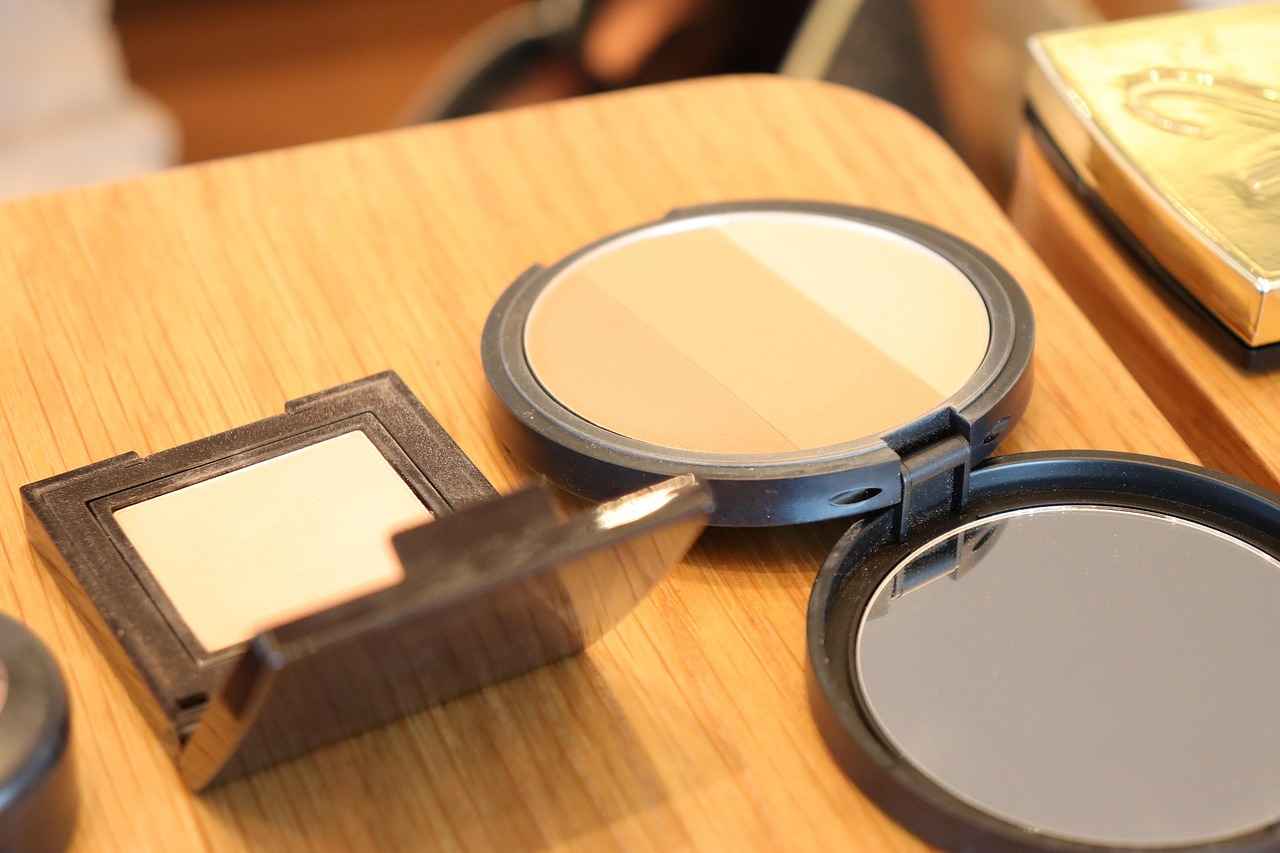
Can You Machine Wash Your Slip Dress After Stain Removal?
When it comes to caring for your slip dress, particularly after treating it for stubborn makeup stains, understanding the machine washing capabilities of your garment is crucial. Slip dresses, often made from delicate fabrics such as silk or satin, require special attention to maintain their quality and fit. This article explores the important considerations you should keep in mind before tossing your slip dress into the washing machine.
Assessing Fabric Composition
Before machine washing your slip dress, it is essential to check its fabric composition. Many slip dresses are crafted from materials that are not suitable for machine washing. Fabrics like silk or certain blends may be prone to shrinkage, color bleeding, or damage if subjected to the agitation of a washing machine. Always refer to the care label for specific washing instructions.
Choosing the Right Washing Cycle
If your slip dress is deemed machine washable, selecting the appropriate washing cycle is vital. Use the gentle cycle setting, which minimizes agitation and helps protect delicate fabrics. Additionally, consider using a mesh laundry bag to further shield your dress from potential damage during the wash cycle.
Water Temperature Matters
Another crucial factor is the water temperature. Always opt for cold water when washing your slip dress. Hot water can cause delicate fibers to break down more quickly, leading to shrinkage and distortion of the dress’s shape. Cold water, on the other hand, is gentler and helps maintain the integrity of the fabric.
Detergent Selection
Choosing the right detergent is equally important. Look for a mild detergent specifically designed for delicate fabrics. Avoid using bleach or any harsh chemicals, as they can damage the fibers and affect the color of your slip dress.
Drying Techniques for Slip Dresses
After washing, how you dry your slip dress is just as crucial. Avoid using a dryer, as the heat can lead to shrinkage and ruin the fabric. Instead, opt for air drying by laying the dress flat on a clean towel or hanging it to dry in a shaded area. This method helps preserve the shape and quality of your slip dress.
Post-Wash Inspection
Once your slip dress is dry, conduct a thorough inspection. Check for any remaining stains or signs of damage. If the stain persists, it may be necessary to repeat the stain removal process or consider seeking professional cleaning services.
When to Seek Professional Cleaning Services?
If you find that your slip dress has stubborn stains that are not responding to home treatments, or if the fabric is particularly delicate, it may be wise to consult a professional cleaner. They have the expertise and specialized products to treat your garment without causing damage.
In summary, while machine washing your slip dress after stain removal can be feasible, it is imperative to assess the fabric, choose the right washing cycle, and follow proper drying techniques. By doing so, you can maintain the quality, fit, and overall appearance of your favorite slip dress for many occasions to come.
Choosing the Right Washing Cycle
When it comes to caring for your delicate slip dress, is crucial. This decision not only helps to protect the fabric but also ensures that any lingering stains are effectively dealt with. Here are some essential considerations and tips to guide you through this process.
Delicate fabrics, such as silk or satin, require special attention during washing. Using the wrong cycle can lead to shrinkage, fading, or even damage to the fibers. By selecting a cycle that is gentle yet effective, you can maintain the integrity of your slip dress while ensuring cleanliness.
Most washing machines come equipped with various settings tailored for different fabric types. Here’s a breakdown of common settings:
- Delicate Cycle: This cycle uses slower agitation and lower spin speeds, making it ideal for fragile fabrics.
- Hand Wash Cycle: Similar to washing by hand, this setting is perfect for very delicate items.
- Cold Water Wash: Opting for cold water can prevent colors from bleeding and reduce the risk of damage.
Preparation is key to ensuring your slip dress comes out of the wash looking as good as new. Follow these steps:
- Check Care Labels: Always refer to the care label for specific washing instructions.
- Pre-Treat Stains: Apply a gentle stain remover to any visible marks before washing.
- Turn Inside Out: This minimizes friction and protects the outer surface of the fabric.
When washing your slip dress, it’s advisable to wash similar fabrics together. Mixing delicate fabrics with heavier items can cause snagging and damage. If you have multiple delicate items, consider washing them in a mesh laundry bag for additional protection.
To ensure the longevity of your slip dress, avoid the following:
- High Heat: Never use hot water or high heat drying; this can shrink or damage delicate fabrics.
- Harsh Detergents: Use a mild detergent specifically designed for delicate fabrics.
- Overloading the Machine: This can lead to inadequate cleaning and increased friction between garments.
After washing, how you dry your slip dress is just as important as the washing process. Here are some tips:
- Avoid the Dryer: Instead of using a dryer, air dry your slip dress by laying it flat on a clean, dry towel.
- Reshape While Wet: Gently reshape the dress to its original form to prevent distortion.
- Keep Away from Direct Sunlight: This can cause fading; instead, dry in a shaded area.
In conclusion, selecting the right washing cycle is essential for maintaining the beauty and longevity of your slip dress. By understanding your washing machine’s settings, preparing your garment properly, and following best practices for washing and drying, you can ensure that your slip dress remains a cherished part of your wardrobe for years to come.
Drying Techniques for Slip Dresses
When it comes to caring for your slip dress, proper drying techniques play a crucial role in maintaining its shape and overall appearance. After washing, the way you dry your slip dress can determine whether it retains its original fit or succumbs to unwanted shrinkage. This article will explore effective drying methods that not only protect your garment but also contribute to its longevity.
Slip dresses are typically made from delicate fabrics such as silk, satin, or polyester, which can be sensitive to heat and moisture. If not dried correctly, these materials can shrink, lose their shape, or develop unsightly wrinkles. Therefore, understanding the best drying practices is essential for preserving the beauty of your slip dress.
- Air Drying: One of the safest methods for drying slip dresses is to air dry them. Lay the dress flat on a clean, dry towel, reshaping it gently to its original form. This method minimizes the risk of shrinkage and helps maintain the fabric’s integrity.
- Hanging to Dry: If you prefer to hang your dress, use a padded hanger to avoid stretching the straps. Ensure the dress is hung in a well-ventilated area, away from direct sunlight, which can fade colors and weaken fibers.
- Using a Drying Rack: A drying rack provides a great alternative to air drying. Place the dress on the rack, ensuring it is evenly spread out to prevent creases. This method allows air to circulate around the fabric, facilitating even drying.
- Avoiding the Dryer: It is best to avoid using a tumble dryer for slip dresses. The heat can cause significant shrinkage and damage delicate fabrics. Always opt for air drying methods to ensure your dress remains in optimal condition.
To ensure that your slip dress maintains its shape post-wash, consider the following tips:
- Reshape While Wet: After washing, gently reshape the dress while it is still damp. This helps to restore its original silhouette and prevents it from becoming misshapen as it dries.
- Use Fabric Weights: If your slip dress is prone to curling at the edges, consider using fabric weights or clips to keep it in place while it dries. This method helps maintain the dress’s intended design.
- Store Properly: Once your dress is dry, store it correctly to maintain its shape. Consider using a breathable garment bag or hanging it in a closet with enough space to prevent crushing or wrinkling.
Humidity levels can significantly affect the drying process of your slip dress. In high humidity, fabrics take longer to dry, which can lead to a musty odor or mildew. To combat this, consider drying your dress in a well-ventilated area or using a fan to enhance airflow. Conversely, in low humidity, drying may occur too quickly, potentially causing the fabric to become stiff. Balancing these factors is crucial for optimal drying results.
If you’re unsure about the best drying techniques for your slip dress, or if it is made from particularly delicate materials, consider seeking professional cleaning services. Experts can provide tailored advice and services to ensure your garment is treated with the utmost care.
In summary, the right drying techniques can prevent shrinkage and maintain the shape of your slip dress after washing, contributing to its longevity. By following these guidelines, you can keep your favorite garments looking pristine and stylish for years to come.

When to Seek Professional Cleaning Services?
When it comes to maintaining your favorite slip dress, understanding when to seek professional cleaning services is crucial. While many stains can be treated at home, there are instances where expert intervention is not just beneficial but necessary. This section will delve into the signs that indicate it’s time to call in the professionals, ensuring your delicate fabrics receive the utmost care and attention.
Some stains are notoriously difficult to remove and can cause irreversible damage if not treated correctly. Here are a few examples:
- Red Wine Stains: These can penetrate deeply into fabrics, making them challenging to remove without professional-grade solutions.
- Grease or Oil Stains: Common in makeup products, these stains often require specialized treatments that are best handled by experts.
- Ink Stains: Ink can be particularly stubborn, and mishandling can lead to spreading or setting the stain further.
- Blood Stains: If not treated immediately, these can be tricky and may require professional cleaning to avoid permanent marks.
Slip dresses are often made from delicate materials such as silk or satin, which can be easily damaged by harsh cleaning methods. Professionals have the expertise to:
- Identify the fabric type and choose the appropriate cleaning method.
- Apply specialized products that are safe for delicate materials.
- Use techniques that minimize the risk of shrinkage or color fading.
Recognizing the signs of a stain that requires professional help can save you time and prevent further damage. Here are some indicators:
- If the stain persists after multiple home treatments, it’s likely time to consult a professional.
- Stains that have set for a long time, such as those from makeup or food, may benefit from expert intervention.
- If the fabric is visibly damaged or discolored after your attempts to clean it, seeking professional assistance is advisable.
Choosing the right dry cleaner is essential for ensuring your slip dress is treated with care. Here are some tips:
- Experience with Delicate Fabrics: Look for a cleaner who specializes in handling silk and other delicate materials.
- Positive Reviews: Check online reviews and ask for recommendations to find a reputable service.
- Certifications: Ensure the cleaner has relevant certifications and follows industry standards for garment care.
When you take your slip dress to a professional cleaner, you can expect a thorough assessment of the fabric and stains. They will:
- Conduct a pre-cleaning test to determine the best cleaning method.
- Use high-quality, fabric-safe cleaning solutions that are effective yet gentle.
- Provide specialized services, such as stain removal and fabric conditioning, to restore your dress to its original condition.
In conclusion, knowing when to seek professional cleaning services is vital for maintaining the integrity of your slip dress. By recognizing stubborn stains, understanding the importance of expert care, and choosing the right cleaner, you can ensure your favorite garments remain in pristine condition for years to come.
Identifying Stains That Require Professional Help
When it comes to maintaining the beauty and integrity of your slip dress, is crucial. While many makeup stains can be tackled with DIY methods, some may demand the expertise of a professional cleaner to ensure your garment remains in pristine condition.
Understanding which stains are too tough for home remedies can save you both time and potential damage to your beloved dress. Certain types of makeup, such as waterproof mascara or long-lasting foundation, contain ingredients that can set into the fabric, making them particularly challenging to remove. Additionally, the delicate nature of slip dress materials, like silk or satin, can complicate the stain removal process.
- Persistent Stains: If a stain remains after multiple DIY attempts, it may be time to seek professional assistance.
- Delicate Fabrics: Fabrics such as silk and chiffon can be easily damaged by harsh cleaning methods, making professional care essential.
- Stains from Oily Products: Makeup products like lipstick or cream-based foundations can leave oily residues that are difficult to treat without specialized techniques.
- Color Bleeding: If you notice any color bleeding during your initial cleaning attempts, it’s best to consult a professional to avoid further damage.
Finding a reputable dry cleaner is key to ensuring your slip dress receives the best care. Here are some tips:
- Experience with Delicate Fabrics: Look for cleaners who specialize in delicate materials.
- Positive Reviews: Check online reviews and ask for recommendations from friends or family.
- Consultation: Don’t hesitate to ask the cleaner about their methods and experience with similar stains.
When you take your slip dress to a professional, you can expect a thorough evaluation of the fabric and stain. Professionals will often use advanced techniques and products that are specifically designed to remove tough stains without harming the garment. This can include:
- Stain Pre-Treatment: Experts will pre-treat stubborn stains before washing.
- Gentle Washing Techniques: Methods that protect the fabric while effectively removing stains.
- Specialized Drying Processes: Ensuring the garment maintains its shape and texture post-cleaning.
While professional cleaning can be an investment, the cost often reflects the quality of care your garment will receive. Prices can vary based on the type of stain, fabric, and the complexity of the cleaning process. However, preserving your slip dress’s integrity and appearance is usually worth the expense.
In summary, recognizing when a stain is beyond DIY removal can prevent further damage to your slip dress and save you time. By being aware of the signs that indicate professional help is needed and knowing how to choose the right cleaner, you can ensure that your favorite garment remains in excellent condition for years to come.
Choosing the Right Dry Cleaner
When it comes to maintaining the beauty and integrity of your slip dress, is crucial. Not only do you want to ensure your garment is cleaned properly, but you also want to protect the delicate fabrics that make your slip dress special. Here are some essential considerations to keep in mind when selecting a reputable dry cleaner.
Not all dry cleaners are created equal. Experience plays a significant role in how well a cleaner can handle delicate fabrics. A dry cleaner with a proven track record will possess the knowledge and skills necessary to treat various materials effectively. They will understand the specific requirements of fabrics like silk, satin, and chiffon, ensuring that your slip dress is treated with the utmost care.
- Read Reviews: Look for online reviews and testimonials from previous customers. This can provide insight into the quality of service and customer satisfaction.
- Ask for Recommendations: Seek advice from friends or family who have experience with local dry cleaners, especially those who specialize in delicate fabrics.
- Check Certifications: Ensure the dry cleaner is certified and follows industry standards for cleaning delicate items.
Before entrusting your slip dress to a dry cleaner, it’s beneficial to understand their cleaning process. Inquire about the solvents and detergents they use. Some cleaners may use harsh chemicals that can damage delicate fabrics. A reputable cleaner will be transparent about their methods and will likely use eco-friendly, fabric-safe solutions.
Make sure to ask how the dry cleaner handles specific stains, particularly makeup stains, which can be challenging to remove. A knowledgeable cleaner will have a variety of techniques and products at their disposal to tackle different types of stains without harming the fabric.
Customer service is another vital aspect to consider. A good dry cleaner should be willing to answer your questions and address any concerns you may have. They should also provide you with clear instructions on how to care for your slip dress after cleaning.
While cost should not be the only factor in your decision, it’s essential to understand the pricing structure of the dry cleaner. Compare prices among different cleaners and ensure that you are getting a fair deal for the quality of service provided. Additionally, inquire about turnaround times, especially if you need your slip dress cleaned for a specific occasion.
Once you find a dry cleaner you trust, consider establishing a long-term relationship. This can lead to better service, as they will become familiar with your preferences and the specific needs of your garments. A reliable dry cleaner can be an invaluable resource for maintaining your slip dress and other delicate items in your wardrobe.
In conclusion, selecting a reputable dry cleaner with experience in handling delicate fabrics can ensure your slip dress is treated appropriately and effectively. By considering factors such as experience, customer service, and cleaning techniques, you can find a dry cleaner that will help keep your favorite garments looking pristine for years to come.
Frequently Asked Questions
- What should I do if my slip dress gets a makeup stain?
Act quickly! Blot the stain gently with a clean cloth to absorb excess makeup. Then, choose the right stain removal method based on the type of makeup.
- Can I use regular detergent on my slip dress?
It’s best to use a gentle detergent specifically designed for delicate fabrics. This helps avoid damage while effectively removing stains.
- How can I test my slip dress for colorfastness?
Before applying any cleaning solution, dab a small, hidden area of the fabric with the solution. If the color doesn’t bleed, it’s safe to proceed!
- Are homemade remedies effective for removing makeup stains?
Absolutely! Many household items like dish soap or vinegar can work wonders on stains, making them a cost-effective and eco-friendly alternative.
- When should I consider professional cleaning services?
If the stain persists despite your best efforts or if the fabric is particularly delicate, it’s time to consult a professional dry cleaner to avoid further damage.
